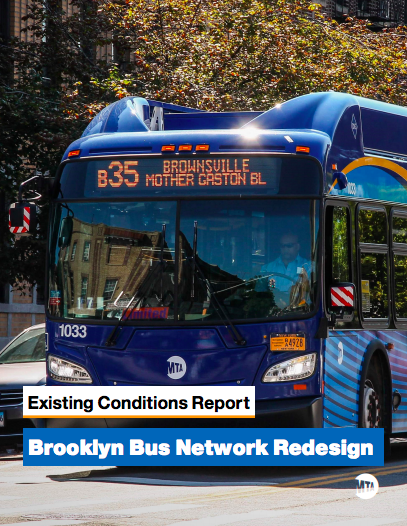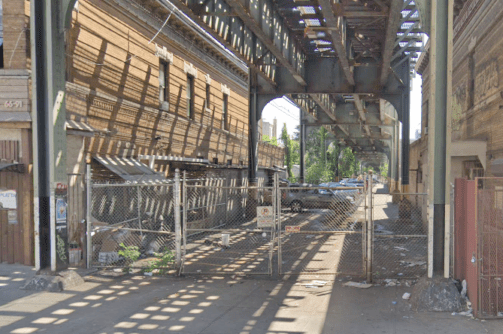Ridgewood could be next in line for a genuine, bona-fide, car-defying Busway.
Buried on page 107 of the MTA's Brooklyn Bus Network Redesign Existing Conditions report, the agency said it is considering a Busway under the elevated M tracks between Palmetto Street and Fresh Pond Road — a half-mile stretch that's currently inaccessible to the public (except for some drivers who use it as a parking lot).

The proposed Busway is a revival of an old idea floated for the 2015-2019 MTA capital plan. As Streetsblog reported, a study determined that the $12.5- to $19-million capital cost for a bus-only road would save the MTA $1 million in operating costs every year upon completion. The project was never built — but now the city is in full grip of Busway fever, thanks to the success of the 14th Street no-car transitway.
The savings would presumably come from increased ridership along the B13, B20 and Q58, which all run on narrow, frequently clogged residential roads that are parallel to the potential Busway. As a result all three lines have lost riders in the past few years. The B20 has experienced the biggest ridership drop, from 8,105 riders per day in 2013 to 6,315 now, a 22-percent drop. The B13 lost 3.2 percent of its riders, and the interborough Q58 experienced a 5.2-percent drop over the same period.
A MTA official urged bus fans not to have a victory parade or burst into sudden and well-choreographed song about just yet. The official confirmed that the street improvement was a real possibility, but it wouldn't get added to the 2020-2024 capital plan, and that its inclusion in the Brooklyn bus network redesign plan came from the middle of the MTA pyramid and not the top.
"This is from a well-meaning and well-intentioned bus planner who was being enthusiastic about the idea and wants it to be on the radar of the public," the official said, stressing that there was a lot of work that had to be done to bring the proposal off the page. (URGENT PLEA: If you are that bus planner, slide into the DMs of one @DaveCoion and claim your prize of one dozen beers). But, the MTA official also said that reviving the idea fit in with the agency's revived interest in making the bus work as well as possible.
"We're in a culture where we love the bus and are trying to make the experience better," the official said.
The Department of Transportation, which runs the city streets on which the buses are driven, deferred all questions to the MTA. Mayor de Blasio's attitude towards more Busways has been to live up to his Brooklyn roots and tell long-suffering bus riders “Wait ’til next year” (which is now this year).
But transit activists warmly greeted the news of another potential bus-only street and called on the mayor to live up to his promise to improve bus speeds by 25 percent across the city by the end of 2020 by pushing the DOT to embrace improvements for on streets that the report labeled bus priority corridors.
"It sounds like a neat idea," said Riders Alliance spokesperson Danny Pearlstein. "Meanwhile, Mayor de Blasio, should pick the report's low-hanging fruit and expand bus priority widely this summer. More than just moving two million New Yorkers more reliably and efficiently, faster bus trips would advance nearly every proposal outlined in his 'Save Our City' speech."
Pointing to the lessons learned from the 14th Street Busway (bus priority means more bus riders), Transportation Alternatives' senior organizer Erwin Figueroa said the rider-hemorrhaging routes that would use the Ridgewood Busway could benefit greatly.
"Buses that have to share a right of way with mixed traffic are losing riders across New York City," Figueroa said. "Providing a dedicated right of way is the key to better service — and winning back riders."
And Lisa Daglian of the Permanent Citizens Advisory Committee to the MTA said that the coming of congestion pricing needs a concurrent effort to improve every kind of transit option.
"There must be investment in improving and increasing service in the boroughs to encourage people to use transit," she said.






